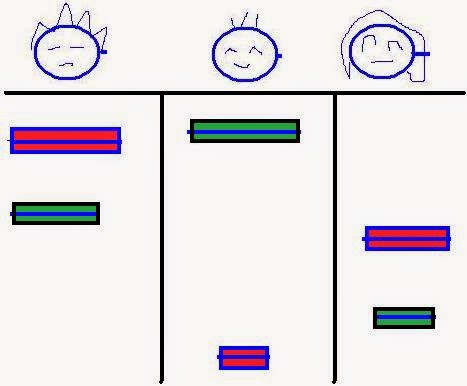Understand DNA Fingerprinting
DNA FINGERPRINTING
-DNA fingerprinting is also
called as DNA profiling or DNA fingerprint.
-DNA fingerprinting method
was developed by Alec Jeffery at the University of Leicester in 1984.
Any two persons are 99.99 percent
same in terms of their DNA sequences; however, there is 0.01 percent
difference. Human genome contains 3 billion base pairs. Less than 2 percent of
the genome codes for proteins – rest 98 percent of the genome sequence is non-coding.
The non coding regions have
different regions such as STR (short tandem repeats), VNTR (variable number
tandem repeats) and RFLP (Restriction Fragment Length Polymorphism), etc.
If we take an example of
three persons 1, 2 and 3 – their genes will be the same, but their tandem
repeats (in this case, STRs) will be different. If we remove everything except
STR sequences, we will get different fragments of variable sizes.
If we use a specific DNA restriction
enzyme to cut these STRs, we will get DNA molecules of different sizes. We can
then separate them using gel electrophoresis.
Now, we can apply this DNA
fingerprinting technique to catch a suspect in a murder case. Let’s consider that the three individuals 1,2
and 3 as explained above are prime suspects of the murder. So, we can get the
blood sample of every suspect as well as the victim and do fingerprinting.




